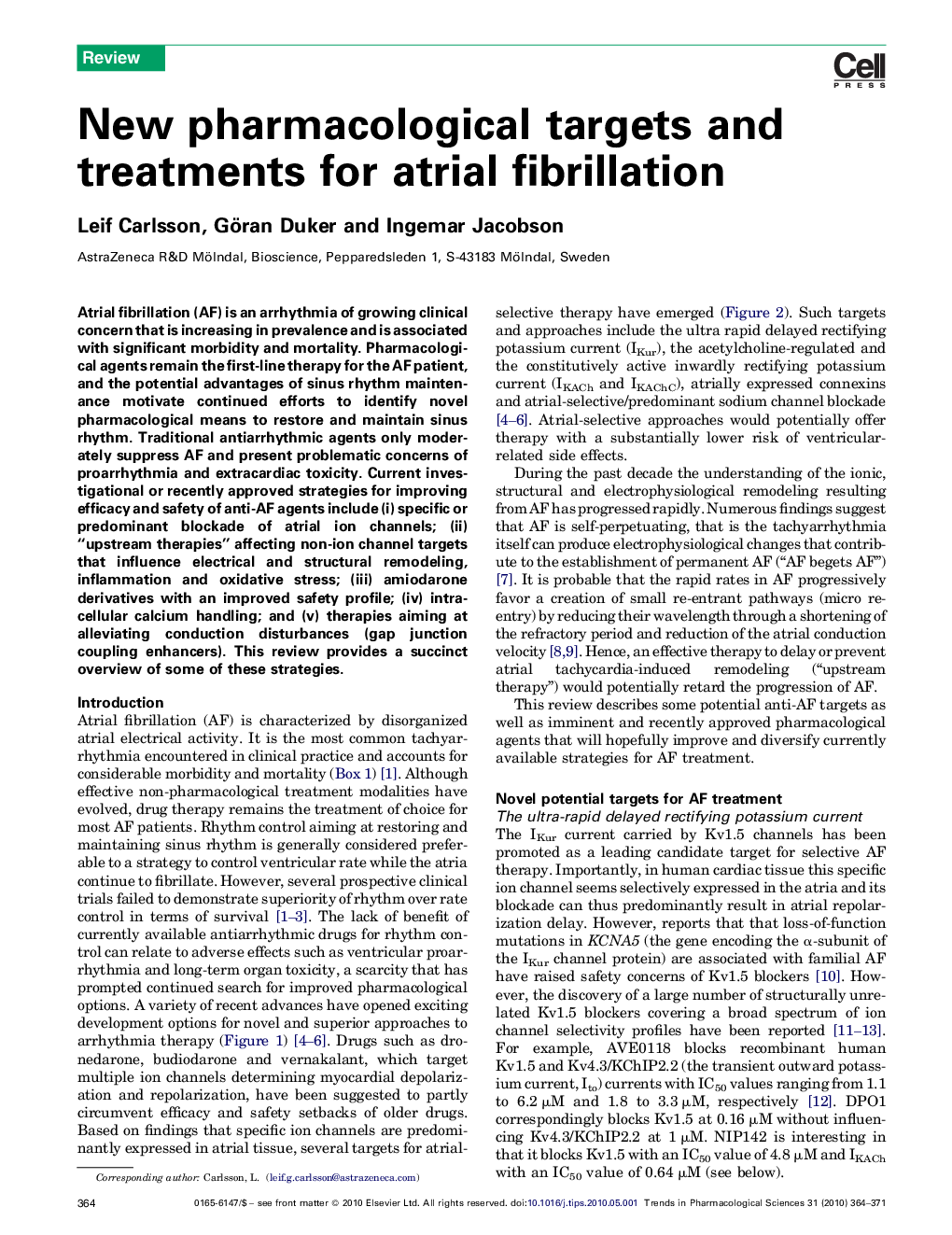| Article ID | Journal | Published Year | Pages | File Type |
|---|---|---|---|---|
| 2573053 | Trends in Pharmacological Sciences | 2010 | 8 Pages |
Atrial fibrillation (AF) is an arrhythmia of growing clinical concern that is increasing in prevalence and is associated with significant morbidity and mortality. Pharmacological agents remain the first-line therapy for the AF patient, and the potential advantages of sinus rhythm maintenance motivate continued efforts to identify novel pharmacological means to restore and maintain sinus rhythm. Traditional antiarrhythmic agents only moderately suppress AF and present problematic concerns of proarrhythmia and extracardiac toxicity. Current investigational or recently approved strategies for improving efficacy and safety of anti-AF agents include (i) specific or predominant blockade of atrial ion channels; (ii) “upstream therapies” affecting non-ion channel targets that influence electrical and structural remodeling, inflammation and oxidative stress; (iii) amiodarone derivatives with an improved safety profile; (iv) intracellular calcium handling; and (v) therapies aiming at alleviating conduction disturbances (gap junction coupling enhancers). This review provides a succinct overview of some of these strategies.
